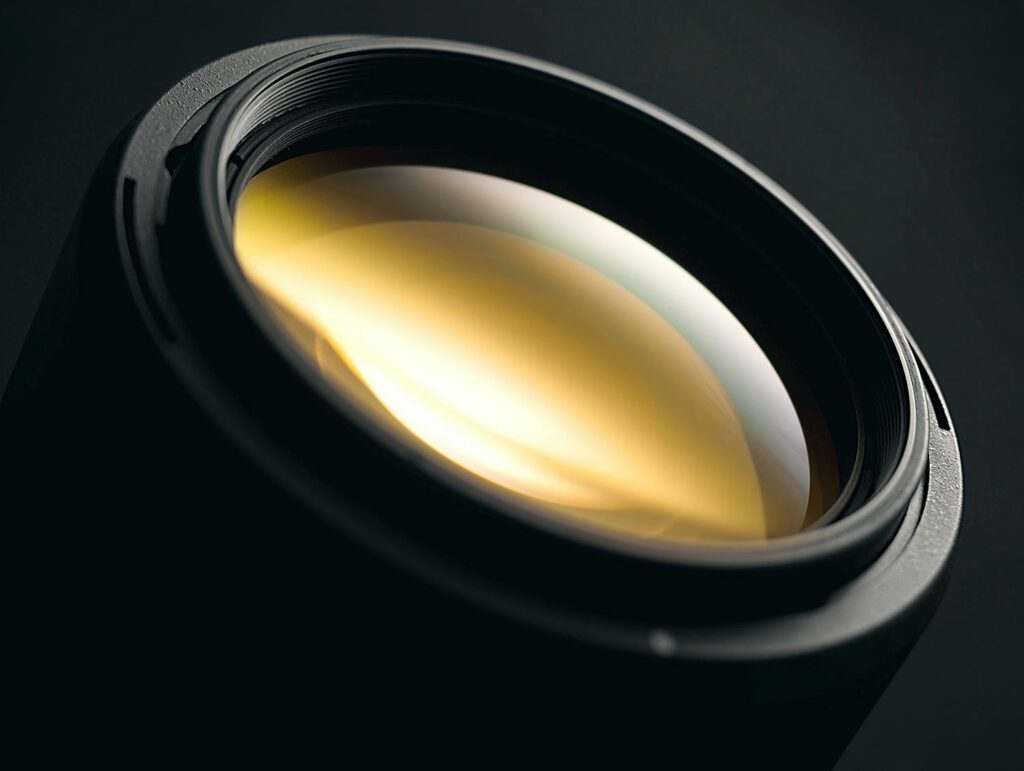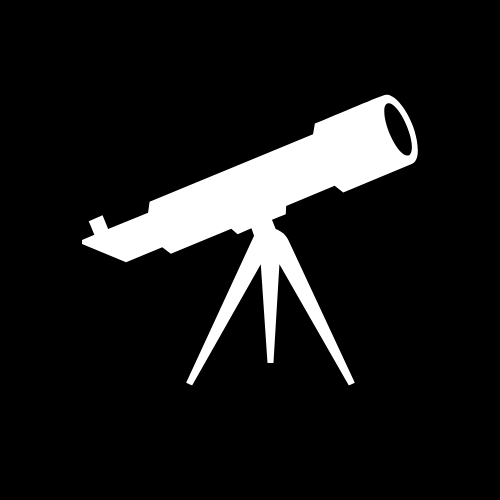Aperture importance and how to maintain it
What is aperture?
Aperture is one of the most important factors in determining the quality of the images produced by a commercial telescope. The aperture is the diameter of the main lens or mirror that collects light and forms an image. The larger the aperture, the more light the telescope can gather, and the clearer the image will be. A larger aperture allows you to see fainter objects, as well as more detail in bright objects.

In general, a larger aperture means that you’ll be able to see more celestial objects more clearly. This is why aperture is considered the single most important factor in choosing a commercial telescope.
A larger aperture not only allows for a clearer image, but it also allows for higher magnifications without the image becoming too blurry. For example, a telescope with an aperture of 8 inches can handle magnifications up to 200x, while a smaller telescope with an aperture of 4 inches may only be able to handle magnifications up to 80x. It also allows for the observation of faint and distant objects, such as distant galaxies and nebulae, that would be difficult or impossible to see with a smaller telescope.
However, a larger aperture also means a larger and heavier telescope, which can be more difficult to set up and transport. It also means a higher cost, as larger aperture telescopes are more expensive to manufacture and produce. It’s important to strike a balance between aperture size and the other factors that are important to the individual.
Aperture and Telescope Price: A Key Consideration for Astronomers
When delving into the world of astronomy, understanding the relationship between a telescope‘s aperture and its price is crucial. The aperture, essentially the diameter of the telescope’s primary lens or mirror, plays a pivotal role in determining both the quality of the images you’ll see and the cost of the telescope.
Larger apertures allow more light to enter, resulting in brighter, clearer images, especially of faint celestial objects. However, this enhancement in image quality comes with a corresponding increase in price.
The cost escalates due to the higher amount of material and the precision required in crafting larger optical components. For amateur astronomers, balancing the desire for a large aperture with budget constraints is a common challenge.
Standard Aperture Sizes in Telescopes
For beginners, telescopes with small apertures, typically under 100mm, are recommended. These are cost-effective, easy to handle, and ideal for viewing the moon, planets, and brighter deep-sky objects. They offer a great introduction to astronomy without the complexity and expense of larger models.
Medium apertures, ranging from 100mm to 200mm, strike a balance between portability and enhanced viewing capabilities. They cater well to amateur astronomers who have some experience and wish to explore more detailed features of the night sky, including fainter deep-sky objects like nebulae and galaxies.
Large aperture telescopes, exceeding 200mm, are preferred by serious hobbyists and professional astronomers. These telescopes excel in light-gathering ability, providing exceptional clarity and detail, essential for advanced astronomical observations. However, they tend to be more expensive, heavier, and less portable, making them less suitable for casual stargazers.
What Aperture Should I Choose?
Choosing the right aperture for your telescope is a pivotal decision that significantly impacts your astronomical experience. The aperture size determines how much light your telescope can gather, which in turn affects the clarity and detail of the images.
For general stargazing, a moderate aperture provides a good balance between cost and performance. However, for specific interests like deep-sky objects or planetary details, a larger aperture may be more beneficial. Consider your observational goals, portability requirements, and budget when deciding on aperture size.
Telescope Aperture Sizes and Magnification
Understanding the relationship between telescope aperture sizes and magnification is essential for optimal astronomical observation. Larger apertures provide not just better light gathering and image clarity, but also enhance the telescope’s capability for higher magnification.
| Aperture Size | Light Gathering | Practical Magnification Limit |
|---|---|---|
| Small (e.g., 70-130mm) | Limited brightness | Lower, ideal for wide-field views |
| Medium (e.g., 140-200mm) | Good balance of light and resolution | Moderate, versatile for various objects |
| Large (e.g., 200mm+) | High brightness and resolution | Higher, ideal for detailed planetary and deep-sky observation |
Maintenance
Keeping it clean
One of the key factors in maintaining the quality of the aperture is keeping it clean. Dust and debris can accumulate on the lens or mirror. It reduces the amount of light that can pass through and affecting the clarity of the image. A dirty aperture can also cause other optical problems, such as vignetting and loss of contrast.
To clean the aperture, it’s important to use the proper materials and techniques. A soft, clean cloth, such as a microfiber cloth, should be used to gently wipe the lens or mirror. Avoid using rough or abrasive materials, as these can scratch the surface and cause permanent damage. Never touch the lens or mirror with your fingers, as oils can transfer and be difficult to remove.
If the lens or mirror is extremely dirty, it may need to be disassembled and cleaned using specialized cleaning solutions. This is a job best left to a professional. It requires a high level of skill and knowledge to avoid damaging the optics.
Protect it from the elements
In addition to keeping the aperture clean, it’s important to protect it from the elements. A telescope should be stored in a dry, dust-free environment when not in use. Covered with a dust cover to prevent dust and debris from settling on the lens or mirror. If the telescope will be transported or stored in a vehicle, it should be placed in a hard case to protect it from bumps and scratches.

Moisture can cause damage to your telescope’s aperture, so it’s important to keep it protected. If you live in a humid area, be sure to store your telescope in a dry place, such as a climate-controlled room or a dehumidified case. You can also purchase desiccant packs or silica gel to help absorb any moisture that may be present.
Extreme temperatures can cause damage to your telescope’s aperture, so it’s important to store it in a place that is not too hot or too cold. A room that is kept at a moderate temperature is ideal.
Regular maintenance
Regular maintenance is important for maintaining the health of your telescope’s aperture. This can include cleaning the lens or mirror, checking for any scratches or damage, and adjusting the focus. It’s a good idea to have your telescope serviced by a professional every few years to ensure that it’s in good condition.
A dust cover is an inexpensive and effective way to protect your telescope’s aperture from dust, dirt, and other debris. Simply place the cover over the lens or mirror when the telescope is not in use.
Rough handling can cause damage to your telescope’s aperture, so be sure to handle it carefully and gently. When transporting your telescope, be sure to use a sturdy case that provides adequate protection.
Use the right lens cap
It’s important to use the right lens cap for your telescope to protect its aperture from scratches, dust, and other debris. Be sure to follow the manufacturer’s instructions for using the correct cap.
Regularly checking the alignment of your telescope’s aperture is important to ensure that it’s performing at its best. If you notice that the image is not as sharp as it should be, or if the focus is off, it’s time to check the alignment and make any necessary adjustments.
Direct sunlight can cause damage to your telescope’s aperture, so be sure to avoid pointing it directly at the sun. You can use a solar filter to reduce the amount of light that enters the telescope, which will help protect the lens or mirror.
The mount
The mount of the telescope also plays a role in maintaining the quality of the aperture. A stable mount is necessary to prevent image shake and vibrations, which can affect the clarity of the image. The mount should be sturdy and able to support the weight of the telescope, and the telescope should be securely fastened to the mount to prevent movement during use.
Aperture is a critical factor in determining the quality of the images produced by a commercial telescope. A larger aperture allows for a clearer image and the observation of faint and distant objects, but it also means a larger and heavier telescope and a higher cost. To maintain the quality of the aperture, it’s important to keep it clean and protected from the elements, and to have a stable mount that prevents image shake and vibrations. When choosing a commercial telescope, it’s important to consider all factors, including aperture, to ensure that you get the best image quality possible.
Recommended aperture and focal length for observing various celestial objects
| Object | Recommended Aperture | Recommended Focal Length |
|---|---|---|
| The Sun | ≤ 6 inches (150 mm) | 1000-1500 mm |
| Planets | ≥ 5 inches (125 mm) | ≥ 1250 mm |
| Open Clusters | ≥ 5 inches (125 mm) | 1250 mm or more |
| Globular Clusters | ≥ 11 inches (280 mm) | ≥ 1500 mm |
| Nebulae (Bright) | 5-8 inches (125-200 mm) | ≤ 1000 mm |
| Nebulae (Faint, Large) | ≥ 8 inches (200 mm) | < 1000 mm |
| Nebulae (Faint, Small) | ≥ 8 inches | ≥ 1000 mm |
| Planetary Nebulae | ≥ 11 inches (280 mm) | ≥ 2000 mm |
| Galaxies | 8-11 inches (200-280 mm) | – |
| Meteor Showers | – | – (Best with naked eye) |
| Comets | – | Low focal length (wide field of view) |
To conclude the article “Aperture Importance and How to Maintain It,” one might emphasize the vital role of the telescope’s aperture in astronomical observation. It’s crucial to understand that a larger aperture allows more light to enter, yielding clearer and more detailed images. However, maintaining this aperture is equally important. Regular cleaning, careful handling, and proper storage are essential to protect the aperture from damage and preserve its effectiveness. This balance of understanding and maintaining the aperture will ensure a rewarding and long-lasting stargazing experience.
FAQ
- What role does the aperture play in a telescope? A: The aperture determines the telescope’s light-gathering ability and image clarity.
- How does aperture size affect my observations? A: Larger apertures capture more light, offering clearer and more detailed views, especially of faint objects.
- Is a larger aperture always better? A: While larger apertures provide better views, they also make the telescope bulkier and more expensive.
- How do I properly maintain the telescope’s aperture? A: Regular cleaning and careful handling are essential to maintain the quality of the aperture.
- Can the aperture be upgraded later? A: Generally, the aperture is fixed and cannot be upgraded; the entire telescope needs to be replaced for a larger aperture.
- Does a larger aperture require more maintenance? A: Yes, larger apertures might require more frequent cleaning and careful handling.
- What’s the best aperture size for beginners? A: Beginners might start with a smaller aperture to balance cost, ease of use, and portability.
- How does aperture size influence the telescope’s weight? A: Larger apertures typically result in heavier and bulkier telescopes.
- Are there any disadvantages to a large aperture? A: Besides cost and size, larger apertures can be more sensitive to atmospheric conditions.
- What is the best way to clean the aperture? A: Use specialized cleaning kits and follow manufacturer guidelines to avoid damage.
